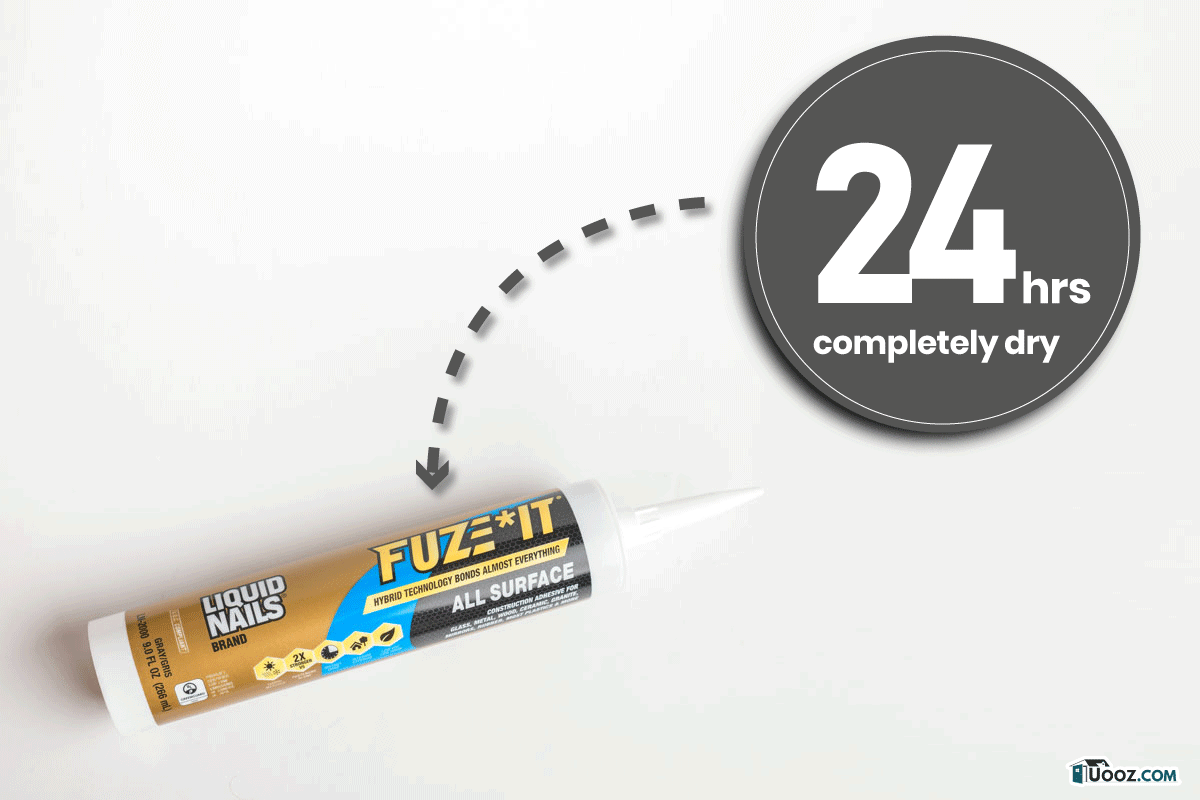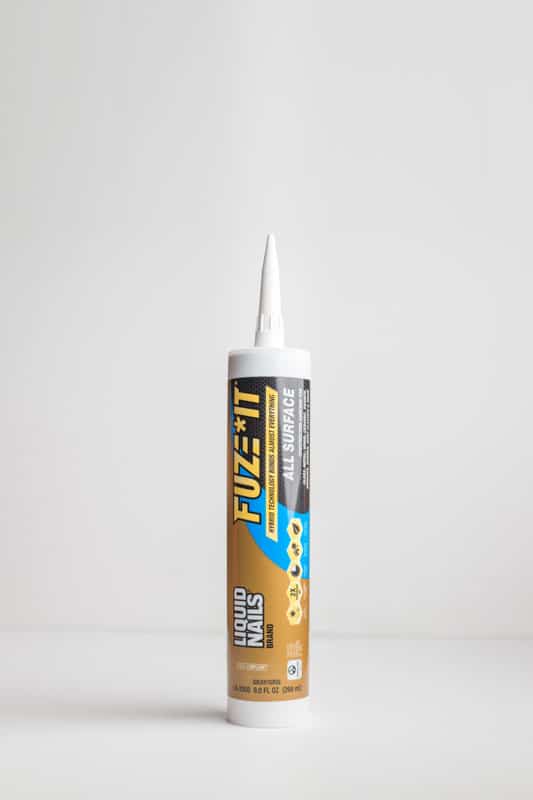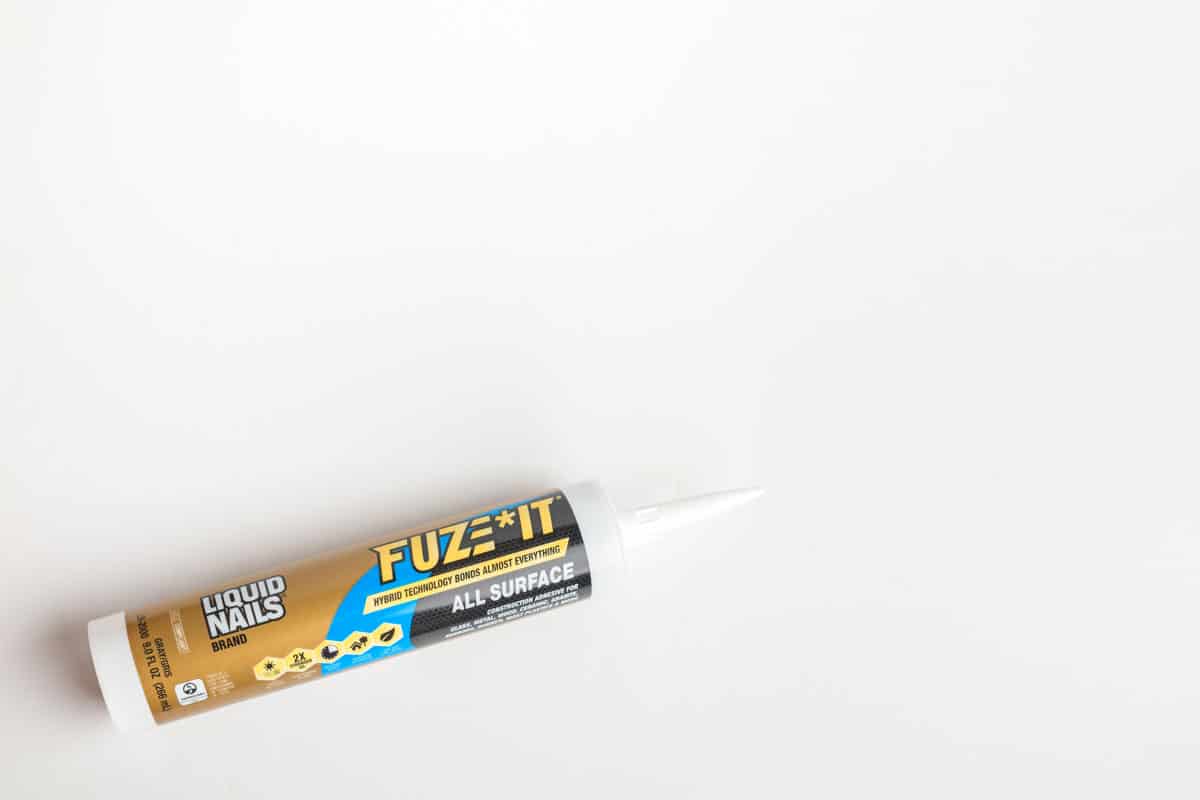Starting a home DIY project can be filled with more questions than answers. For example, do you want to secure something using Liquid Nails and then screw into them? Is it okay to drill into Liquid Nails to double the support? What are Liquid Nails: are they safe?
Well, we've done plenty of searching and have the answers to this question below!
Yes, you can screw into Liquid Nails once they are dry. Generally, you should be able to get a screw through the Liquid Nail product because it's a polyurethane-based adhesive, so that's something to keep in mind.
Furthermore, you don't want to screw into wet Liquid Nails, which can cause a mess and make your bond less effective and durable. Some Liquid Nail formulas might also dry too hard to screw into, so this can be hit or miss.
As we start this article, we will cover all things Liquid Nails and discuss whether you can screw into them or not. We're here to assist if you want to repair a cabinet, haven't used Liquid Nails before, or have additional questions. With that said, let's dive right into this topic!
Can You Screw Into Liquid Nails? Is It Safe?
![]()
This should be fine for those wanting to add a screw to your liquid-nailed surface. As we mentioned, Liquid Nails respond well to nails/screws if they are dry and moveable.
Specifically, many experts recommend screwing into polyurethane-based Liquid Nail products. That's because they are more adaptable, even when dry, which can make a difference.
According to Modern Design, they prefer to wait until their Liquid Nail dries, then drill holes and attach screws or anchors. Liquid Nails are supposed to go where traditional screws and nails can't: so you might have to rely on them solely for some projects.
Liquid Nails are also solid, often holding wood in place with no issue. Therefore, it might not be necessary to double down with a screw.
Of course, this can depend on your project and your adhesive's age. Generally, the more time that goes by for Liquid Nails, the weaker they will become.
Adding a screw between your two surfaces can help increase their bond and safety, so this will depend on the project you're working on. Everyone is different.
Are Liquid Nails An Adhesive? Are They Like Glue?
Yes! One of the common misconceptions about Liquid Nails is that they're some type of actual nail. That is incorrect: they're an adhesive bond that construction workers/DIYers use to hold things together instead of screws or nails.
More specifically, Liquid Nail products are also called "construction adhesive," so don't be alarmed if someone describes them that way instead. Liquid Nails are a popular construction-grade adhesive brand, often made with polyurethane.
Polyurethane is a synthetic plastic resin made from polymers, which hold things together. So, they're closer to glue than nails. You can also expect Liquid Nails to be stronger than the standard adhesive you'd use for crafting, so they pack a punch.
This brand of adhesive is also pretty widespread, so it will be available at most retailers. Moreover, if you need to bond two surfaces and can't use a screw or nail: that's when you can use this product.
Some people also add a nail or screw once their adhesive dries, so that's another option.
Liquid Nails Heavy Duty Construction Adhesive
This two-pack of Liquid Nail adhesive is construction-grade, works for vinyl, plastic, and stone, dries tan, meets the GREENGUARD Gold Standard, can go inside or outdoors, and come in a 10-ounce tube.
What Are Liquid Nails Made From?
![]()
For anyone curious about what goes into making a Liquid Nail, expect most of these products to be latex-based. As we covered above, Liquid Nails are made of polyurethane material, meaning they're made with microplastics.
That isn't a surprise, as most (if not all) construction adhesives follow this formula. One of the benefits of using latex-based adhesives like Liquid Nails is that you won't struggle with using other products.
For example, once the adhesive dries, you should be able to safely use a screw as well to combine your two surfaces. This isn't required, however, as Liquid Nails are very sturdy on their own.
According to the Liquid Nails site, each product they make is "specifically formulated to bond various substrates and common building materials."
That means not every Liquid Nail product you buy will be the same formula, color, or usage. Some products will be better suited for the outdoors, while others should be inside, etc.
However, you should expect any Liquid Nail adhesive you purchase to be made with polyurethane-based formulas.
What Surfaces Can I Use Liquid Nails On?

When it comes to the surfaces, you can use Liquid Nails on; this is extensive. According to The Liquid Nails Fuze*It Family, you can expect your products to work on surfaces including:
- Wood
- Metal
- Glass
- Marble
- Rubber
- Brick
- Plaster
Furthermore, you can expect Liquid Nails to work well on both porous and non-porous surfaces. Unlike most adhesives, these products will bond to rough or smooth textures.
That can make a huge difference for anyone building a home or even doing a DIY project. Another reason Liquid Nails are so popular is their versatility.
Although you can stick to regular screws and nails while building, this alternative is a sound choice.
This YouTube video also covers what surfaces Liquid Nail products can typically bond with, so it may be worth checking out:
Again, this line of products is an excellent option for professionals or for people at home wanting to use fewer screws and nails for their projects. Of course, Liquid Nails aren't quite as reliable as the real thing: so that can be a drawback.
You want to start and see if the surface you're connecting would do better with a nail, and if not, try and use a Liquid Nail adhesive. Some surfaces won't be able to last with only glue keeping them together.
Do Liquid Nails Weaken Over Time?
Although this depends on where Liquid Nails are, it can be expected for them to become less durable over time. Like most adhesive products, Liquid Nails remain adaptable even once dry.
This easy movement can help keep your glue from losing its adhesive properties as the years' progress. However, that doesn't mean Liquid Nails are always permanent.
Unlike a metal screw, your Liquid Nail products are made with a synthetic plastic base. Even though plastics take decades to start and break down, even the slightest change can make a difference.
According to Batchelor Supply, Liquid Nail adhesives and caulks remain flexible once dry to ensure that expansion and contraction of the materials are possible.
So, to an extent, your Liquid Nail product should stay strong for an extended period. However, this isn't always 100% accurate, so people may also want to use a screw or nail.
It can't hurt to ensure your two surfaces have an extra support cushion. Especially for places that will see weathering or weight, your Liquid Nails may break down faster than usual.
Try and keep all this in mind before using your product.
How Long Does It Take For Liquid Nails To Dry?

Once you apply Liquid Nails to a surface, try and give it at least 24 hours to dry. Since this is an adhesive product, you have to let it cure for a day or so.
Unlike a regular screw or nail, Liquid Nails require a wait time. With that said, your Liquid Nail products should begin drying within 15 minutes of application.
So, be extra cautious during that first day to ensure you don't ruin your nail's drying progress. The last thing you want to do is screw into a wet Liquid Nail only to have to redo the entire thing.
That's why we recommend using screws until the product is fully set.
According to the Liquids Nails website, waiting about seven days is best before adding any additional support or product to your application.
That's because, during the first week, your Liquid Nails will reach their maximum strength.
However, your exact timeline will vary depending on the environmental conditions (like moisture in the air). If possible, try using Liquid Nails in dry, warm locations: they will dry faster.
Are Liquid Nails Better Than Real Nails?

When it comes to Liquid Nails being "better" than real ones, this depends. For example, is your project something you want to minimize damage on?
If so, Liquid Nails might be a better alternative to messy, destructive nails. The same goes for surfaces you may not be able to secure a nail or screw in.
Again, Liquid Nail adhesives are construction-grade, meaning they should be very powerful and manage weight/environmental changes quite nicely.
According to DIY experts, Liquid Nails are some of the toughest adhesives on the market. That can make a massive difference for anybody needing them to secure heavy materials.
They aren't the real thing, but sometimes, that can be their greatest advantage.
To Finish

Whether you want to use Liquid Nails for the first time or use them regularly, it's always good to know the basics. From what we found, you can screw into fully-dried Liquid Nails.
Therefore, if you want to give your surface an extra cushion of protection with a real screw/nail: that's entirely fine. The key is waiting until the adhesive dries, which should take about 24 hours.
You can also expect Liquid Nails to be incredibly hardy inside and outdoors. That makes them perfect for a vast array of building and DIY projects: make sure to read the instructions!
And while we have you, check out these helpful related articles below:
How To Install Roll Roofing [With And Without Nails]

